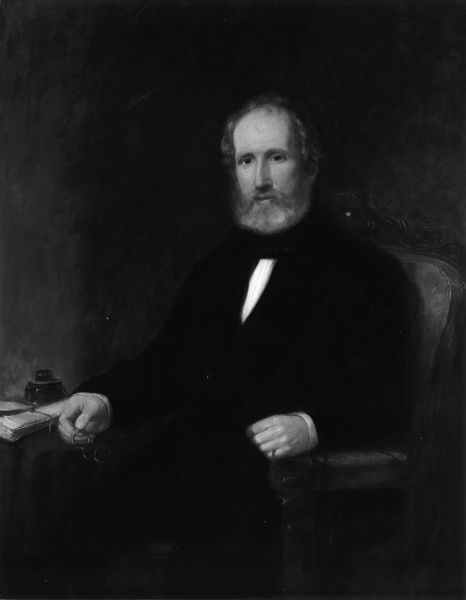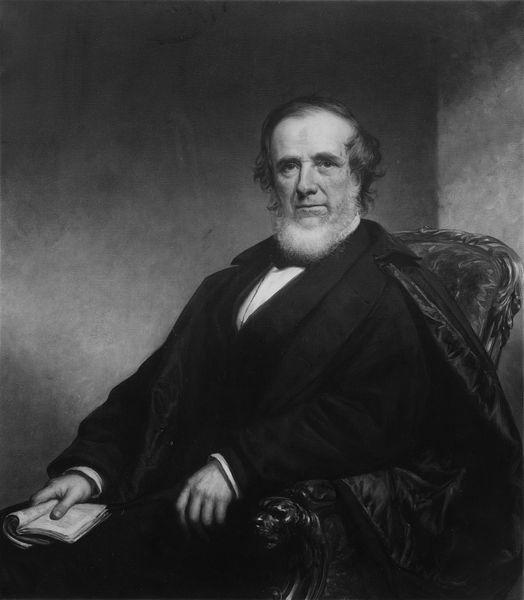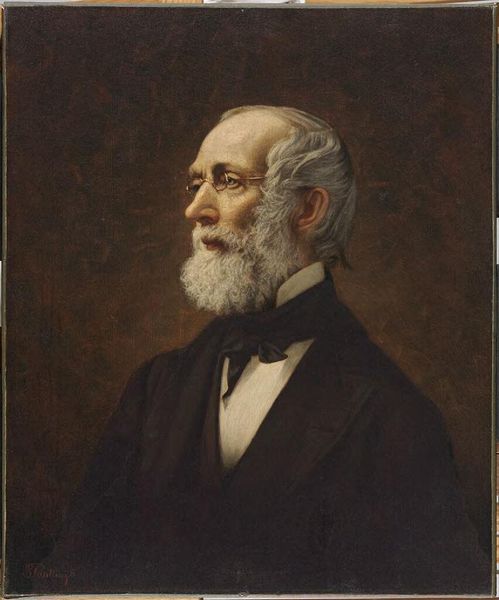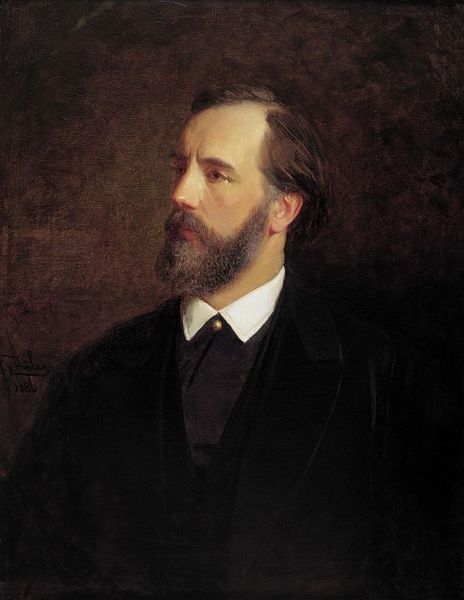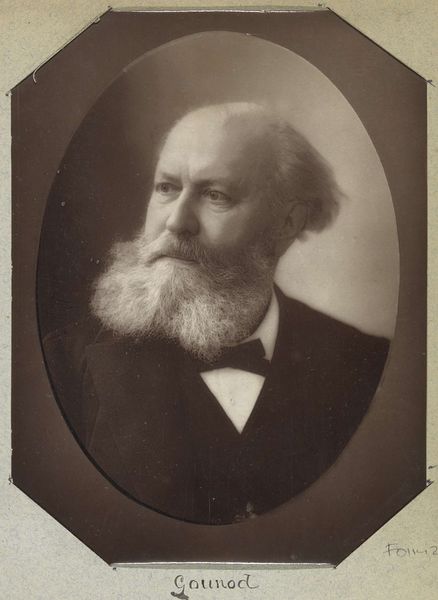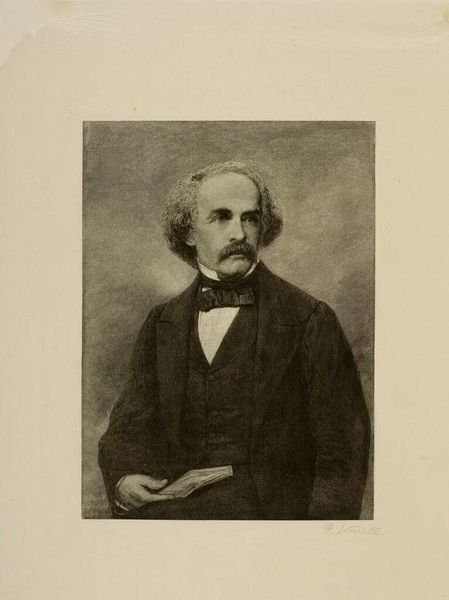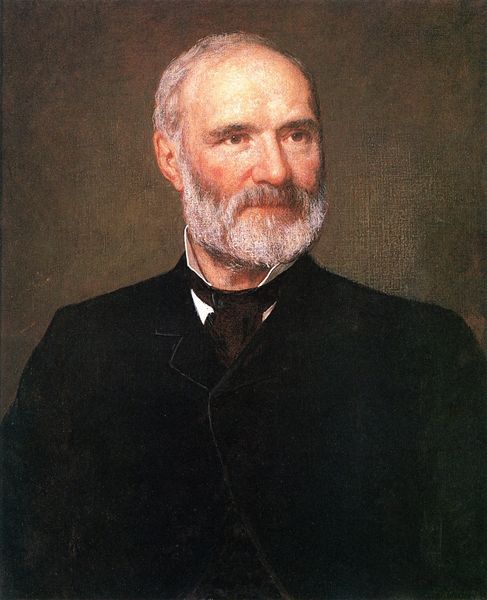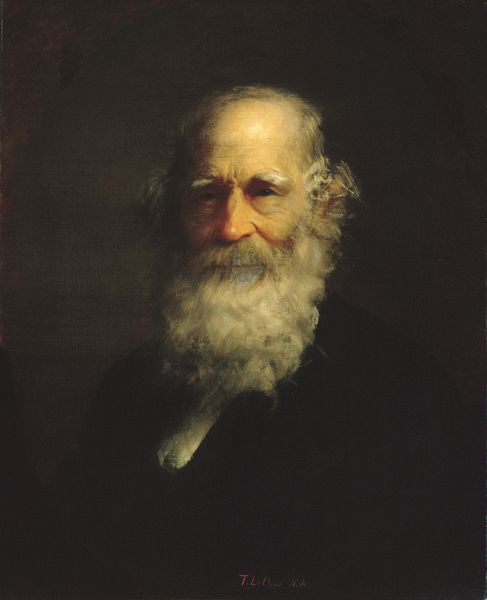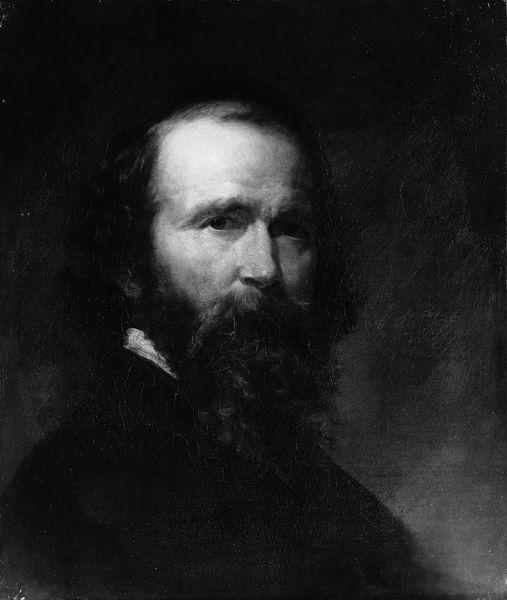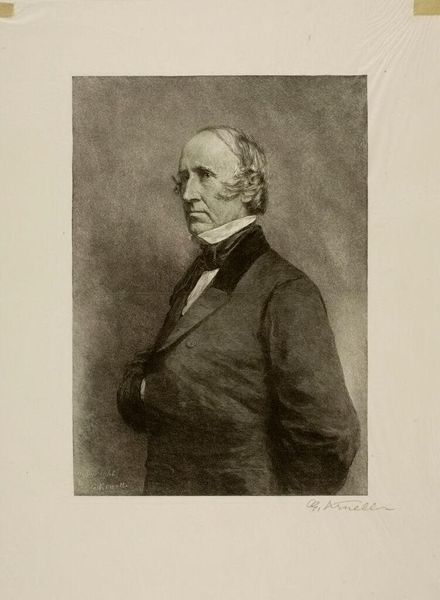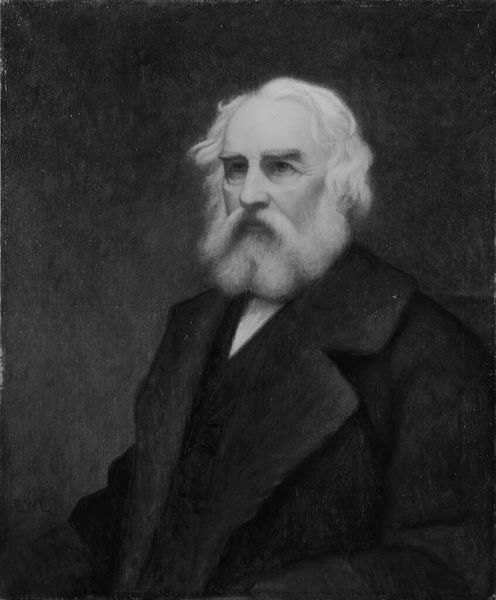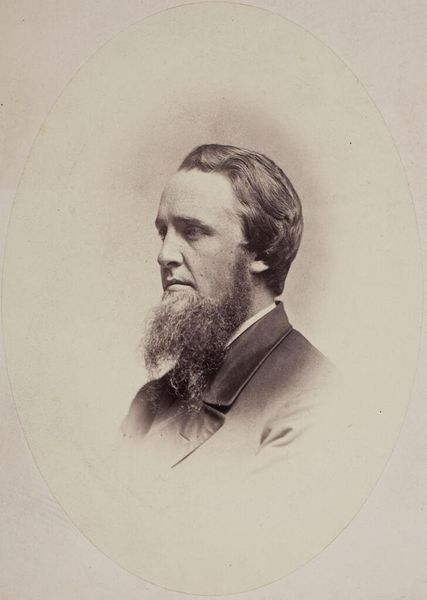
oil-paint
#
portrait
#
16_19th-century
#
portrait
#
oil-paint
#
history-painting
#
academic-art
#
realism
Dimensions: 29 1/2 x 24 1/2 in. (74.9 x 62.2 cm)
Copyright: Public Domain
Curator: Here we have Daniel Huntington's portrait of Cyrus W. Field, completed in 1879. An oil painting of a man cloaked in finery, it reflects both the subject's societal position and a specific artistic aesthetic. Editor: Immediately, I'm struck by the composition's stark contrasts. The soft, almost luminous quality of Field's face against the opulent darkness of the fur creates a captivating image, doesn’t it? It seems designed to convey power. Curator: Indeed. Field was a major 19th-century financier, best known for his role in laying the first transatlantic telegraph cable. Huntington, a prominent portraitist of the era, captures that sense of achievement, that very modern sense of being a builder of progress. His clothing communicates prosperity, essential to the image of titans. Editor: Precisely. The luxurious fur isn't just about warmth; it's about wealth, power, and perhaps even a sense of colonial exploitation. When you think of where resources like this originate, there is a need to connect it with that socio-economic history and even an undercurrent of what cost its provision implied to some communities. Curator: I think that's a fair consideration. However, viewing it through the lens of his time, it's important to understand that figures like Field were considered symbols of American ingenuity and entrepreneurial spirit. Huntington was tasked with conveying that heroism, reinforcing the image of the self-made man. Editor: And to what extent does it romanticize this ideal? Does the artwork invite a critical engagement or primarily function as an act of myth-making? Considering its display in an institution like the Met, is it just legitimizing these power structures by putting them on a pedestal? Curator: Well, part of art's role, historically, is precisely that: To memorialize, celebrate achievements, and communicate status. The Met, in turn, through display and contextualization provides a means of interpreting these past realities, rather than necessarily endorsing them uncritically. Editor: Maybe so, yet these are still choices in what to put up for the audience, and who defines that achievement in the first place. Looking at Huntington's style, his academic approach adds another layer. Its commitment to realism reinforces its perceived truth, amplifying the intended narrative, yet whose truth? Curator: Perhaps the crucial thing to remember, in conclusion, is how the painting functions both as a record of its time and also a window onto its ideological underpinnings. Editor: Definitely, and by confronting those uncomfortable narratives embedded in artworks like this, we engage in the ever necessary practice of critiquing who, how, and why someone is remembered by society.
Comments
No comments
Be the first to comment and join the conversation on the ultimate creative platform.
